
Solar boat engineer and designer Silent Yachts has shared new details of the SILENT-60, a 60′ catamaran with 42 solar panels and two electric propelled motors backed by 286 kWh of battery capacity. While Silent Yachts’ solar-powered vessels are all unique, the SILENT-60 will also be fitted with a 9-13 square meter kite wing, generating additional clean power to pull the yacht.
Silent Yachts was founded by Heike and Michael Köhle, who together have sailed over 75,000 nautical miles around the world, and decided there had to be a better way to propel yachts with clean energy.
After beginning research into solar yacht technologies in 2004, Silent Yachts gathered five years of sailing data and constructed its first fully self-sufficient solar-powered catamaran, the Solarwave 46.
After a five-year trial at sea that began in 2010, Silent Yachts had a proven solar yacht concept, and began serial production of luxury sustainable vessels in 2016 with the SILENT-64. By 2018, The SILENT-64 had become the first serial-production solar-powered bluewater catamaran to cross the Atlantic, from Cartagena, Spain to Barbados in 16 days.
In 2020, the company announced a partnership with Volkswagen Group, which will supply all the components and batteries for a new 50-foot yacht. The yacht will be designed with the help of Cupra, and will utilize VW’s MEB Platform.
Earlier this year, Silent Yachts launched the SILENT-60 as a more powerful, revamped generation of the SILENT-64. With the company’s latest announcement, the SILENT-60 catamaran looks to separate itself from other solar yachts by utilizing even more sustainable propulsion techniques.
The SILENT-60 solar yacht specs
In addition to being a yacht completely powered using solar energy, Silent Yachts has now shared an additional kite wing option that can deliver even more clean range to the Silent-60.
According to the press release, the SILENT-60 will be the first vessel to be fitted with a nine or 13 square meter kite wing, although the option will now be available on all Silent Yacht models.
After deploying the compact kite, it drifts away on the surface of the water before pulling taught and launching into the air. When it reaches its optimal flight height, the kite begins to trace a “figure 8” in the sky, generating additional power to pull the solar yacht. Silent Yacht founder Michael Köhler elaborates:
The main advantages of a kite over a conventional sail system are that it does not throw shade on the solar panels, does not need a tall mast, and generates up to 10 times more power per square meter than a traditional sail. In addition to that it saves about 1.5 tons of weight compared to conventional rig and costs much less. It makes even more sense for the SILENT boats that run on renewable solar energy because the power generated by a kite easily exceeds the energy consumption of the system, so you can charge the batteries while cruising under kite power. And besides that, it’s great fun!
When yacht owners want to stop kiting, an automated app controls the kite, moving it to a position right above the boat where it has the least pull on the line. This allows for more easy electric winching down over the foredeck for stowage.
In addition to the wind kite option, the SILENT-60 yacht comes with 42 solar panels, garnering 17 kWp of energy from the sun to power two, 340 kW electric motors. The system is backed by a battery capacity up to 286 kWh.
As a required safety measure, the SILENT-60 is equipped with a generator and 1,000 liters of fuel. However, according to the Silent-Yachts’ owners, they almost never use it because they have enough solar power and electric energy.
According to Silent Yachts, the SILENT-60 can cruise efficiently with zero emissions using solar power only for up to 100 nautical miles a day and can maintain that pace for weeks. The vessel’s cruise speed is six to eight knots, but it can get up to a top speed of 20 knots using the all-electric motors.
The SILENT-60 comes with four guest cabins but can be designed with a custom layout for those willing to pay a bit more. Speaking of which, the SILENT-60 starts at 2.39 million euros ($2.69 million).
The first of these SILENT-60 solar yachts was built in Thailand, but the company plans to build future units in Italy. Furthermore, Silent Yachts has already shared design plans for a SILENT-80 and SILENT-100 Explorer vessel.
More electrified boats are sure to make their maiden voyage soon. In the meantime, check out this launch video detailing the style and luxury of the SILENT-60:
Electrek’s take
The more I see electric propulsion on larger and larger boats, the more excited I get. While this is still such a niche segment in not just maritime transportation, but electrified mobility overall, it really excites me personally.
Many of you (hopefully) saw my previous article where I got to captain a solar-powered yacht called the Ramblin’ Rose, thanks to Sunwater Marine. That experience helped me learn and experience a lot of similar technology that Silent Yachts has implemented on an even larger and more powerful scale with its catamarans.
While it’s safe to say that my current income level might get me on board a SILENT-60 solar yacht as a mere stowaway, those who can afford their own are going to be blessed with luxury and performance with zero emissions. The quicker we stop burning diesel in our Earth’s waters (and anywhere else while we’re at it), the better.
A top speed 20 knots is nearly 23 mph, not bad for two electric motors getting all their energy from the sun. Obviously, that speed is not sustainable for the batteries, but being able to get 100 NMs from the sun each day truly means you can take this yacht out for weeks at a time if you want. Not to mention the unique wing kite that actually pulls the 60-foot yacht, unlike a sailboat that is pushed by the wind. No range anxiety here.
I’d love to get below deck on one of the Silent Yachts and explore the inner workings… while getting a tan in the Mediterranean, perhaps? A kid could dream, right? For now, I’ll simply have to report electric boat news from my squeaky chair, pretending the cars whizzing by outside are calm ocean waves lapping against the yacht’s hull. Is it too early for a mojito?
FTC: We use income earning auto affiliate links. More.

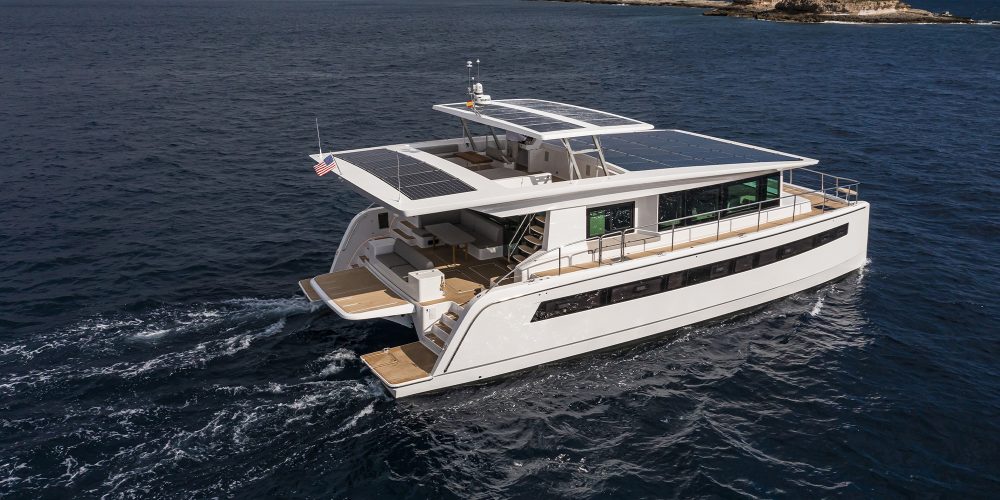
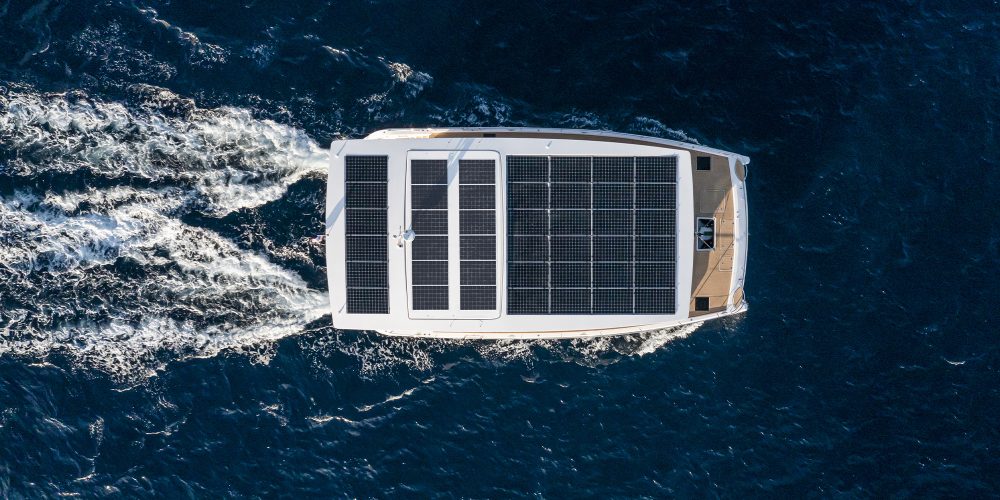
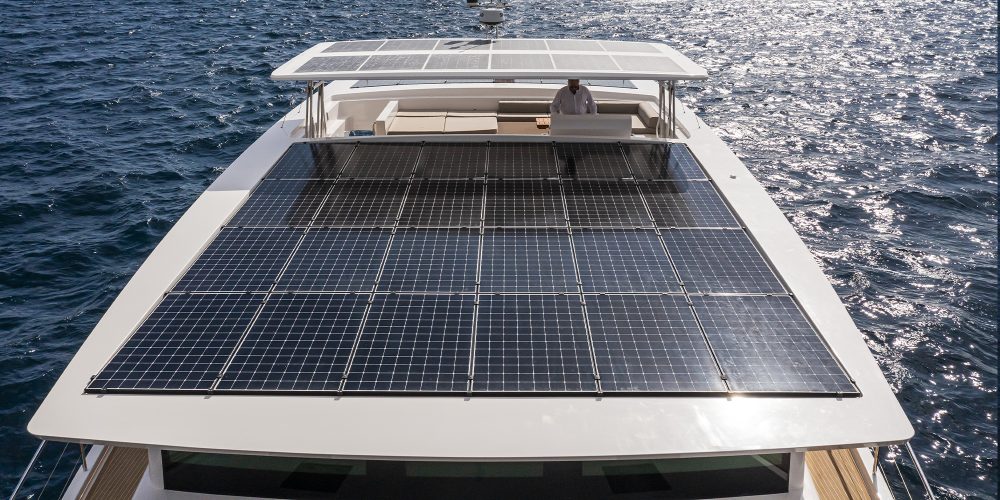
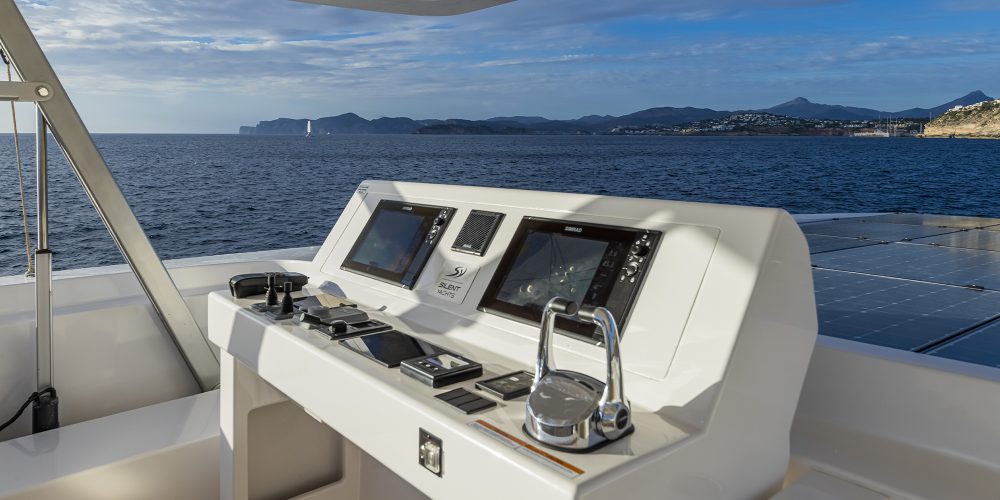
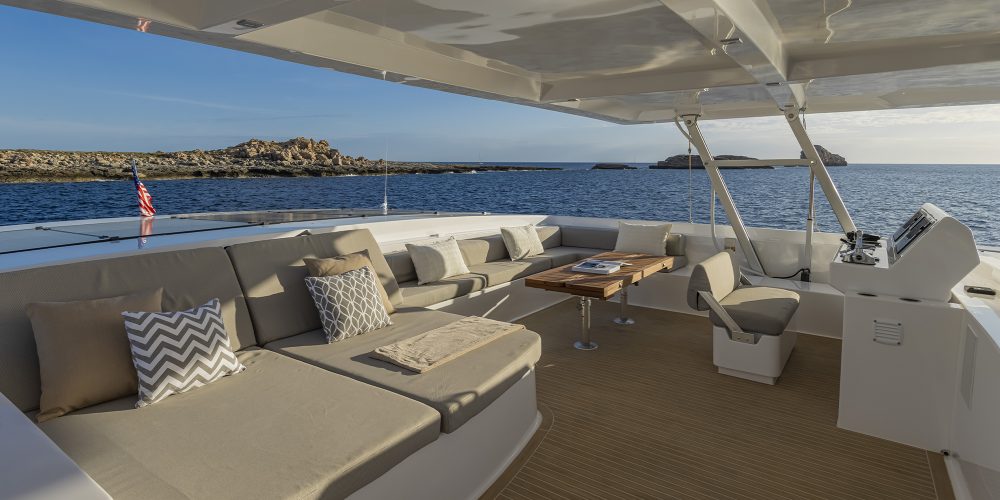

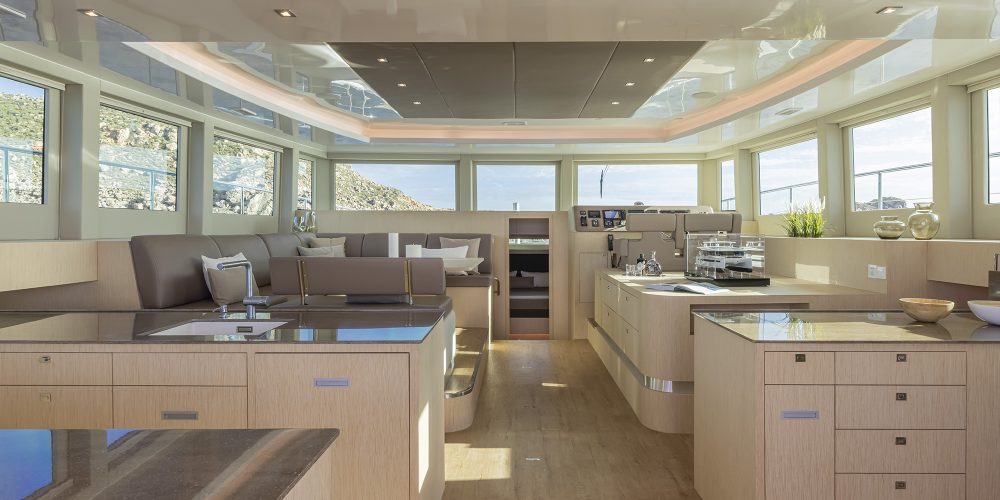
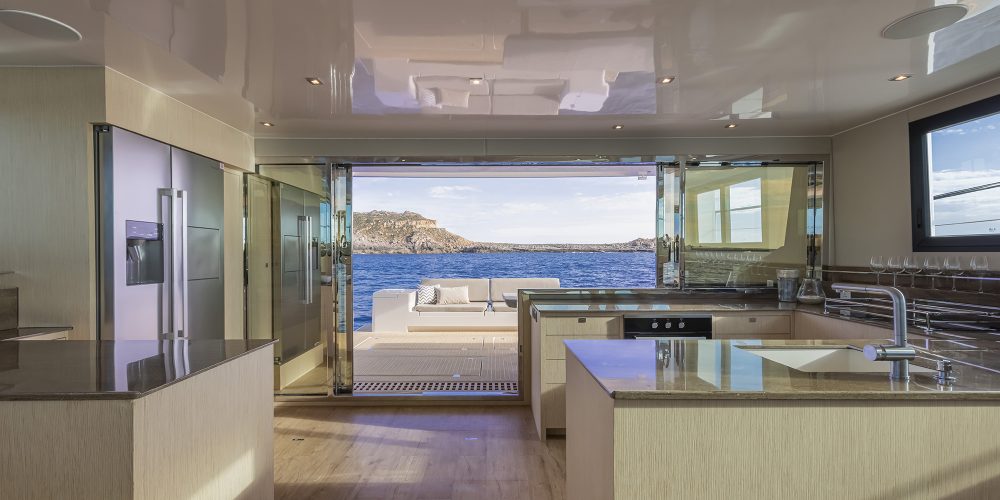
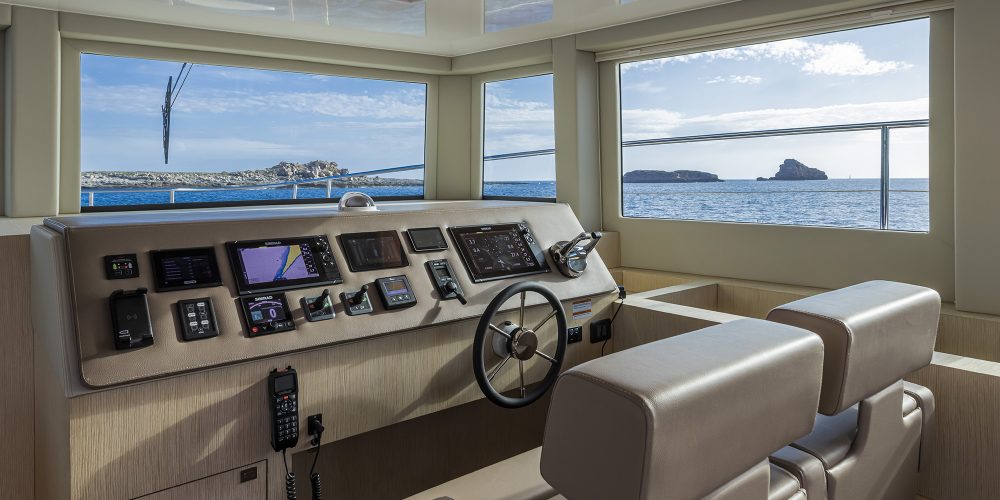



Comments